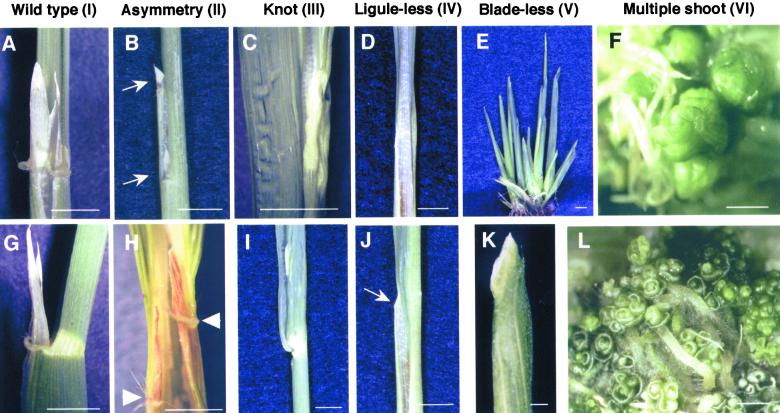Figure 3.
Typical Phenotypes of Rice Leaves in Transgenic Plants That Overproduce the OSH15 Derivatives.
(A) and (G) Wild-type phenotype (I): adaxial (A) and abaxial (G) views show the lamina joint region of a developed leaf.
(B) and (H) Asymmetry phenotype (II): abaxial (B) and adaxial (H) views around the lamina joint region. The arrows in (B) indicate the split ligule, and the arrowheads in (H) indicate asymmetrical formation of auricles.
(C) and (I) Knot phenotype (III): close-up (C) and abaxial (I) views of a leaf blade with a knot.
(D) and (J) Ligule-less phenotype (IV): adaxial (D) and abaxial (J) views around the putative lamina joint region. There was no typical lamina joint, only the development of malformed auricles indicated by the arrow in (J).
(E) and (K) Blade-less phenotype (V): whole plant (E) and abaxial (K) views of a blade-less leaf.
(F) and (L) Multiple shoot phenotype (VI).
Bars in (A) to (E) and (G) to (J) = 5 mm; bars in (F), (K), and (L) = 1 mm.

